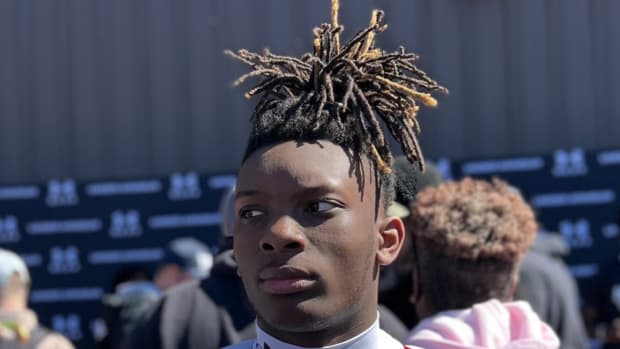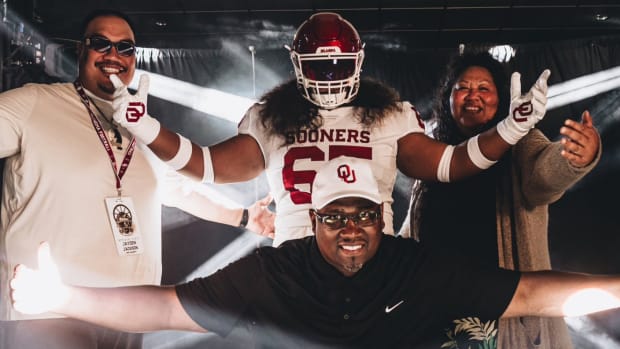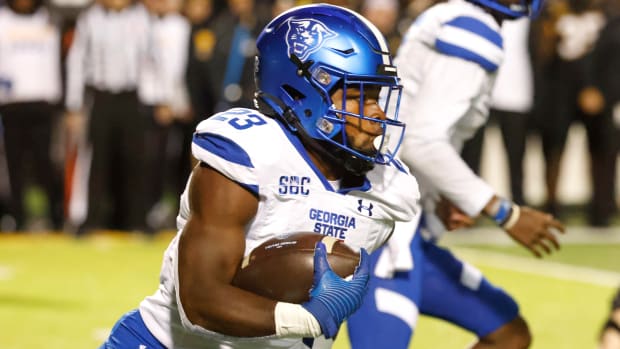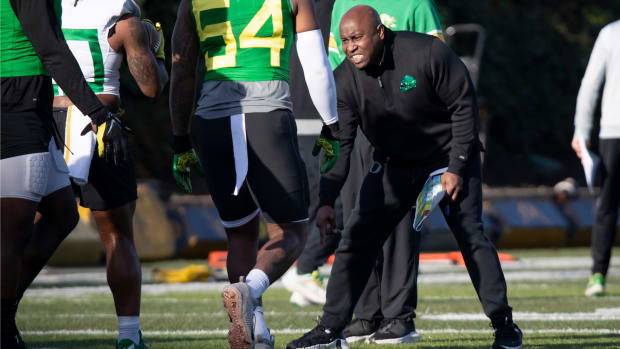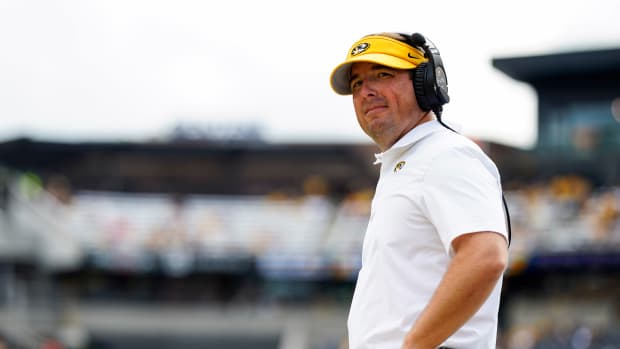Everything You Need to Know About Miami's Turnover Chain
If you've watched a Miami football game this season, you've probably seen the TV cameras cut to a Hurricanes player wearing an oversized gold chain on the sideline.
Look at defensive back Malek Young here, late in the first game of the season against Bethune-Cookman. He's all propped up looking like he's got no worries, with a majestic piece of school-specific bling around his neck. He looks like a king.
But the chain is more performance incentive than fashion statement: It's bestowed upon each player who forces a turnover as soon as he comes back to the sideline. Here's a five-minute guide to college football's shiniest tradition.
Who started the tradition?
According to the Sun-Sentinel, two weeks before the season started, Miami cornerbacks coach Mike Rumph asked Anthony John Machado, a local Miami jeweler, if he would make a rope chain players could wear after forcing a turnover. Luckily for Rumph, Miami legend Vince Wilfork was in AJ's store during the call, and had a better idea.
The initial thought was a rope chain that players would get to wear after forcing a turnover.
“Naw, man,” chimed in Wilfork, recently retired after a 13-year NFL career. “We got to do the Cuban link, AJ!”
The consensus among the three was a collective “Hell yeah!”
“In Miami, what are we famous for? We’re famous for the Cuban chains,” Machado says. “But we need to add a little something to it.
“So we did a big U charm — orange stones, green stones in there to flash it out.”
What is the chain made out of?
The chain contains a 36-inch, 2.5-kilogram, 10-karat gold chain, with 900 orange and green sapphire stones arranged in a "U" that is 6.5 inches wide.
When did the tradition start?
Prior to the team's first game of the season against Bethune-Cookman, Miami defense coordinator Manny Diaz told his defense they were in for a surprise if they forced a turnover. "He told us this morning about the turnover chain," sophomore linebacker Shaquille Quarterman said after Miami's 41–13 win. "It goes to whoever gets the turnover. You get to rock that huge Miami-style chain...it was just another incentive."
Starting with Young's interception of Bethune-Cookman quarterback Larry Brihm late in that first game, Miami players have worn the chain 28 times.
Who's worn the chain?
Defensive back Michael Jackson (5 times):
Defensive back Jaquan Johnson (4 times):
Defensive back SheldrickRedwine (4 times):
Defensive back Malek Young (2 times):
Linebacker Michael Pinckney (2 times):
Defensive back Dee Delaney (2 times):
Defensive lineman Trent Harris (1 time)
Defensive lineman Jonathan Garvin (1 time):
Defensive back Trajan Bandy (1 time):
Linebacker Charles Perry (1 time):
Defensive end/defensive lineman Pat Bethel (1 time):
Defensive lineman RJ McIntosh (1 time):
Defensive lineman Jonathan Garvin (1 time):
Defensive lineman Ryan Fines (1 time):
Running back Travis Homer (1 time):
Even the mascot is getting in on the fun.
Do any other teams do something similar?
Yes. This is nothing new for college football (although Miami players do seem to get the most hyped about it). Back in 2015, Alabama handed out a belt to players who forced a turnover, and both Ole Miss and Colorado State later followed. Georgia players get to wear golden shoulder pads with silver spikes, and both Texas A&M and Tennessee have trash cans that players dunk the football into upon returning to the bench.
Does the chain have a theme song?
Glad you asked.
